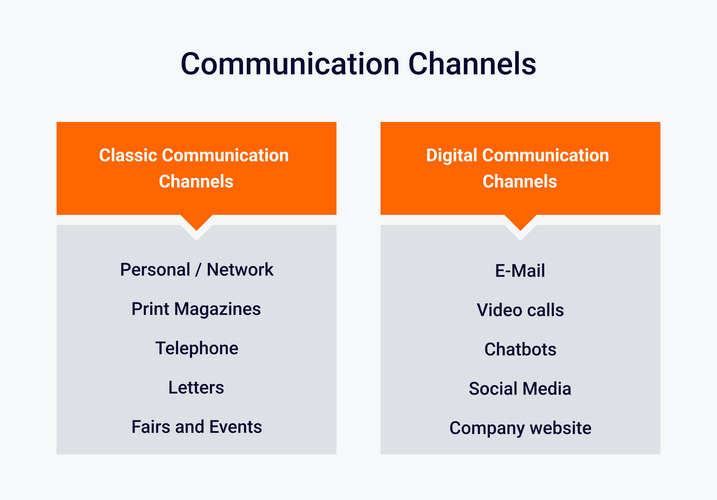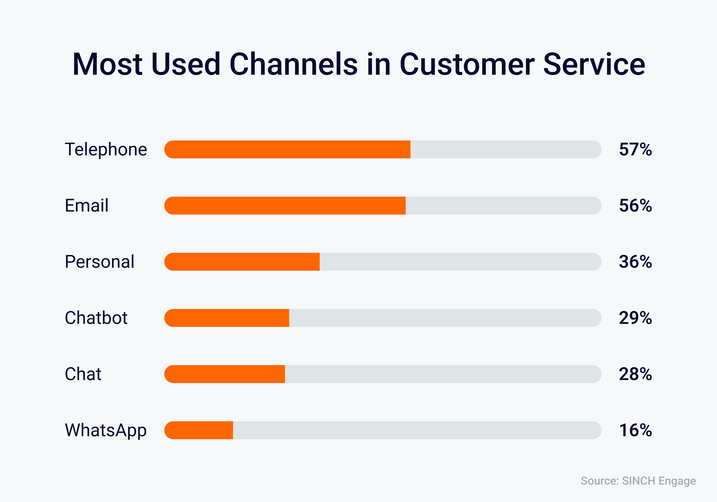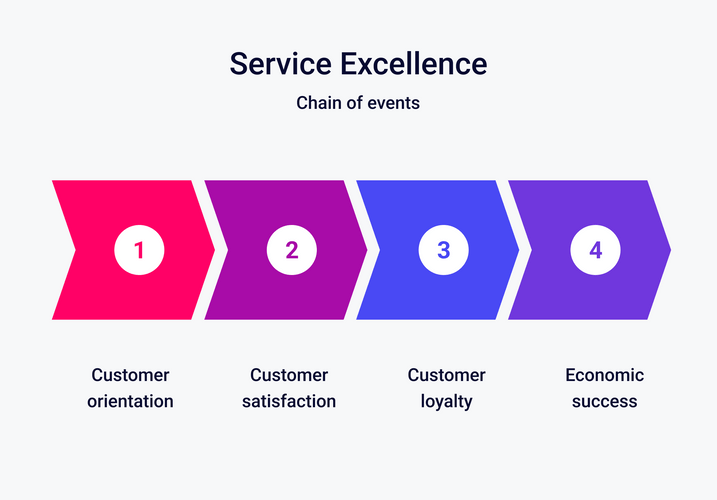Customer Service
What are communication channels?
Communication channels: What options are there and how do you choose the right ones? An overview of the most effective communication channels for companies.

Communication in an online company is crucial for the success and efficiency of the company. By using different communication channels and strategies, employees and teams can work together better and share information. Customers can also be reached through various communication channels.
In a nutshell…
Communication in an online business is crucial to success and efficiency as it improves collaboration and information sharing between employees and teams while effectively reaching customers.
Communication channels are the ways in which information is exchanged and include traditional ones such as phone and email as well as digital ones such as social media and live chats.
Effective use of these channels contributes to customer satisfaction, customer loyalty and overall business success.
- 1What is customer communication?
- 2What are communication channels?
- 3What are the roles of communication channels?
- 4Types of communication channels
- 5What communication channels are there?
- 6Traditional communication channels
- 7Digital communication channels
- 8Internal communication channels
- 9Communication channels for businesses
- 10Automation of communication channels
What is customer communication?
Customer communication refers to the exchange of information, messages and opinions between companies and customers. This communication can take place in various forms such as face-to-face conversations, phone calls, emails, social media platforms, websites or live chat functions.
Customer communication is crucial for building customer relationships, understanding customers’ needs and expectations and improving products and services. Effective customer communication contributes to customer satisfaction, customer loyalty and ultimately to the success of a company.
What are communication channels?
Communication channels are the various ways or media through which information and messages are exchanged between senders and receivers. They are an essential part of the communication process and can be both verbal and non-verbal.

An overview of the various communication channels.
What are the roles of communication channels?
As already mentioned, communication channels are the mouthpiece through which information can be passed on to customers.This results in various tasks that can be fulfilled via these channels:
- Customer service: Customers can use various channels to describe their concerns and receive a response from service agents
- Complaint management: Dissatisfaction should ideally not be communicated via public media
- Internal communication: Information can be distributed from one department to another.
- Advertising
Types of communication channels
There are various ways in which customers can get in touch with companies. The way in which companies communicate with the outside world can also vary. A distinction is made between traditional communication channels and digital communication channels.
Traditional communication channels
Traditional communication channels are the channels that have been with us for many decades. The telephone and email are typical channels.
1 Face-to-Face Support: In physical stores in particular, customers can still be looked after face-to-face and service centers also offer the opportunity to make personal contact. 2 Phone: Personal contact between customers and companies can also be established in telephone support. Customers can find solutions to their problems in real time, but the call center is costly and resource-intensive. 3 E-mail: E-mail is an ideal way to establish direct contact, albeit in a more casual way. One disadvantage of e-mail, however, is that there are often long waiting times.

Traditional and digital communication channels.
Digital communication channels
Digitalization makes it possible to offer more and more channels and be available 24/7.
1 Website chat and messenger chat: A live chat that is integrated into your own website can intercept many customer inquiries directly. Chats are in vogue with customers because they are theoretically available anytime and anywhere and customers also use these channels for private communication. Messenger chat is similar to website chat, with the difference that this chat can be accessed via social media. This means that customers can make direct contact on a company’s Facebook page, for example. 2 Help pages and FAQs: Self-service is becoming increasingly popular. Customers can search for solutions on their own and do not need to contact companies directly. Popular self-service channels also include help pages and FAQs. These collect questions and answers and present them as a catalog. Customers can enter their search queries and immediately receive suitable entries. 3 Social media: Even without messenger chat, communication between customers and companies can take place via social media. Direct messages and comments are a good example of this. However, this can also have disadvantages: negative comments can be typed in a matter of seconds, just like positive ones.

Commmunication Channel Survey.
Internal communication channels
Internal communication channels are crucial for the smooth flow of information within a company. One of the basic channels is email, which is used for formal communications, announcements and document sharing. Corporate intranets serve as a centralized location for internal resources, company policies, employee profiles and discussions.
Instant messaging platforms such as Slack or Microsoft Teams enable real-time communication and collaboration in group chats and channels. Video conferencing is used for virtual meetings, training and team discussions and creates a more personal connection between employees, especially in distributed teams. Company newsletters and internal blogs provide a platform for company news, success stories and specialist articles.
Help pages and FAQs can also be used as internal communication channels in which information is stored and made accessible to everyone involved.
The choice of the right channel depends on the urgency, the target group and the type of communication, with companies often combining several channels to ensure that information is disseminated effectively and employees are well informed.
Communication channels for companies
Companies are increasingly turning to innovative communication channels such as chatbots and self-service platforms to create more efficient and user-friendly customer experiences.
Chatbots are automated programs that use natural language processing to understand and respond to customer queries. They provide fast, round-the-clock support for frequently asked questions, order tracking and simple transactions.
Self-service platforms allow customers to independently access information, order products or solve problems without having to rely on the help of an employee. These include FAQs, knowledge databases, online forms and interactive instructions.
These channels reduce waiting times, increase efficiency and give customers more control over their interactions with the company. They are particularly popular with digitally-savvy consumers who are looking for an immediate solution to their concerns. Companies are therefore increasingly investing in the development and optimization of these channels in order to improve their customer service and reduce costs.
Automation of communication channels
Many companies are looking to automate their communication channels in order to achieve more efficient results. By doing so, they aim to reduce time and costs and enable their customers to respond more quickly.
Manual tasks such as responding to customer inquiries can be automated to reduce the workload on employees and ensure a fast, efficient service.

A central knowledge database as the center of service automation.
